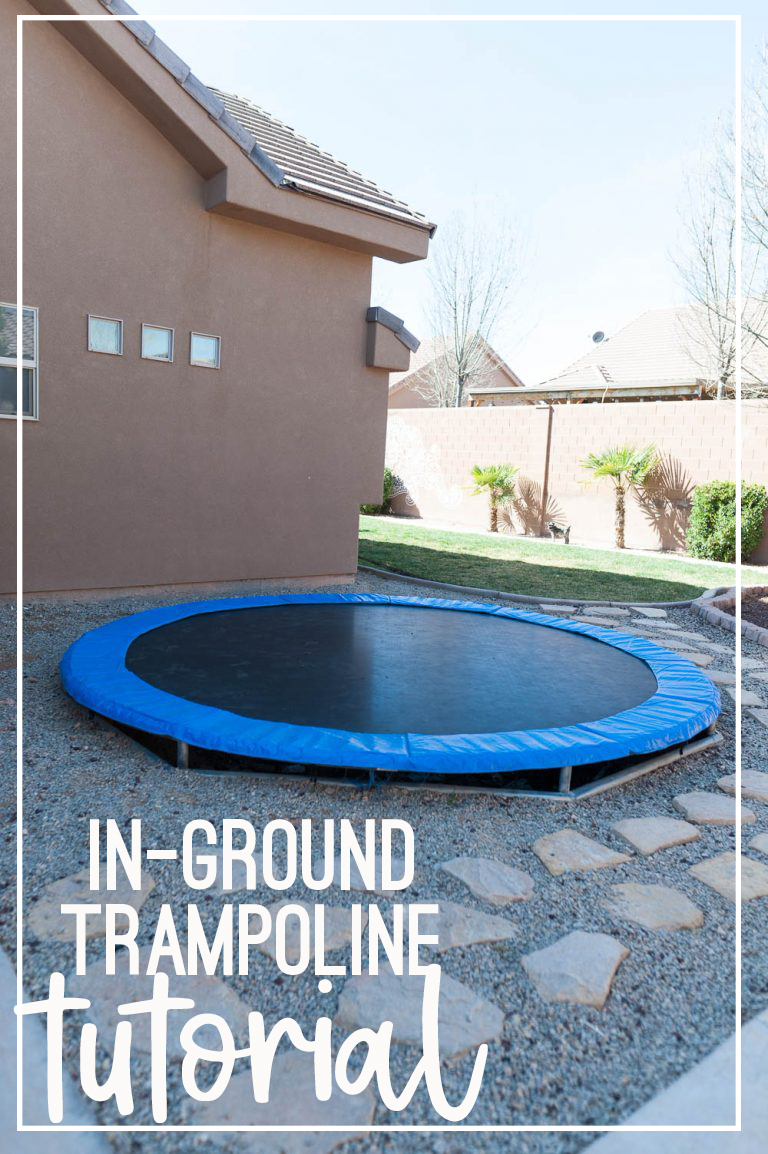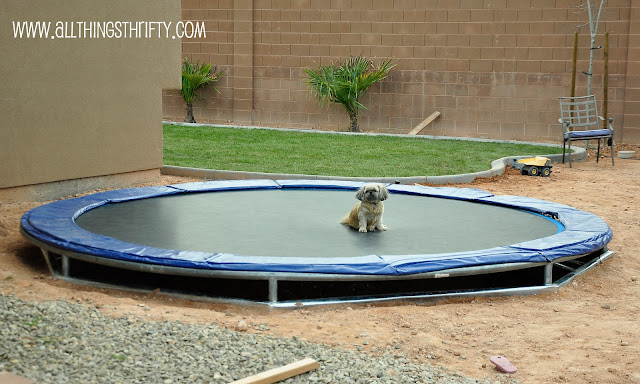To avoid snakes in in-ground trampoline pits, install a sturdy fence and use natural repellents. Regularly inspect and maintain the area to ensure it remains snake-free.
Dealing with unwanted snakes in the pit of an in-ground trampoline can pose a safety hazard and detract from the fun of jumping. Homeowners and trampoline enthusiasts need to know effective ways to keep these slithering intruders at bay. Employing simple, yet effective methods can make the area around your trampoline undesirable to snakes.
Ensuring your backyard enjoyment is not marred by the fear of snakes requires a blend of preventative measures and ongoing maintenance. The following advice is designed to help create a snake-free zone so that families can enjoy their trampolines with peace of mind. Now, let’s dive into the topic and explore the eight most effective strategies to deter snakes from making a home in your in-ground trampoline pit.
Risks Of Snakes In Trampoline Pits
Trampoline pits can be a hidden home for snakes. They find these areas inviting. During play, people may be at risk without knowing it. Let’s uncover why snakes choose trampoline pits and the dangers they might bring.
Why Snakes Are Attracted To Trampoline Pits
Trampoline pits offer snakes a perfect hiding spot. These areas are cool, dark and sometimes damp. Such conditions are ideal for snakes. Rodents may also live here, attracting snakes for food. Trampoline pits are quiet, giving snakes a peaceful spot to rest.
Potential Dangers Posed By Snakes
- Bites: Snakes can bite when stepped on or disturbed. Such bites may carry venom.
- Fear: Discovering a snake can be scary. It can lead to panic and injury.
- Health Risks: Snake bites may need medical attention. Some can be deadly if untreated.

Credit: www.blesserhouse.com
Preventive Landscaping Practices
Preventive landscaping is key to keeping snakes away from in-ground trampolines. The right design and maintenance create a less inviting environment for these slithering visitors. Follow these steps to help ensure your family’s jumping joy is never interrupted by an unwanted snake encounter.
Choosing The Right Location
Select a spot for your trampoline away from tall grasses and bushy areas. Snakes love hiding in these places. Also, place your trampoline away from wetlands, ponds, or any water sources. Snakes are often found near water.
Maintain A Clean Perimeter
Keeping the perimeter of your trampoline clean is crucial. Remove debris, logs, and piles of leaves regularly. These are prime spots where snakes might hide.
- Mow the lawn frequently to keep grass short.
- Trim bushes and shrubs near the trampoline area.
- Ensure no food remains are lying around that could attract rodent prey for snakes.
Use Of Physical Barriers
Defending your in-ground trampoline from unwanted slithering guests means creating strong defenses. Physical barriers act like a fortress, keeping snakes at bay. Simple adjustments to the trampoline’s surroundings will significantly reduce the chances of a snake encounter. Let’s explore how physical barriers can secure your recreational space.
Installing Fencing Or Mesh
A fence or mesh around the trampoline creates a shield against snakes. Choose a material snakes can’t climb or squeeze through. Here are points to ensure effective fencing:
- Height and Depth: The fence should stand tall above ground and extend underground to deter diggers.
- Small Openings: Opt for a mesh with openings small enough to prevent snakes from passing through.
- Durable Material: Metal or plastic materials can offer long-lasting protection.
Sealing Gaps And Entrances
Securing the perimeter means checking for holes. Walk around the trampoline pit and seal any gaps.
| Location | Action |
|---|---|
| Around the edge: | Fill in with rocks or a concrete edge. |
| Underneath: | Use wire mesh to cover openings. |
| Near the springs: | Install spring covers that fit snugly. |

Credit: www.allthingsthrifty.com
Natural Repellents
Peek into the world of natural snake deterrents.
Nature offers several solutions to keep snakes away from in-ground trampolines.
Plants That Deter SnakesPlants That Deter Snakes
Some plants naturally repel snakes.
Consider planting these around your trampoline pit:
- Marigolds – Emit a smell snakes dislike.
- Lemongrass – Contains citronella, a known snake repellent.
- Garlic – Its strong scent is off-putting to snakes.
- Mother-in-law’s tongue – Its sharp leaves discourage entry.
Utilizing Essential Oils
Essential oils double as effective snake repellents.
Here’s how to use them:
- Choose the right oil: Cinnamon oil, clove oil, and eucalyptus oil work best.
- Soak cotton balls in these oils.
- Place them around the trampoline pit.
- Replace regularly to maintain potency.
Commercial Solutions
Keeping snakes away from in-ground trampoline pits can be a challenge. Commercial solutions offer peace of mind with scientifically-backed methods. These products target the snake’s senses, making the area around your trampoline less appealing. Discover the two main approaches: chemical repellents and electronic deterrents. Expertly utilize these tactics to create a snake-free zone for safe jumping fun.
Snake Repellent Products
Commercial snake repellents come as granules, sprays, or powders. Apply these products around your trampoline pit. They emit smells that snakes dislike.
Here’s a list of common ingredients found in these repellents:
- Naphthalene: A common ingredient in mothballs.
- Sulfur: Often blended with naphthalene.
- Cinnamon oil: Natural and smells pleasant to humans.
- Clove oil: Another natural option that snakes avoid.
| Product Type | Frequency of Application | Effective Radius |
|---|---|---|
| Granules | Monthly | Up to 5 feet |
| Sprays | Bi-weekly | 3 – 4 feet |
| Powders | Monthly | Up to 5 feet |
Tip: Always reapply after rain or heavy watering.
Electronic Deterrent Devices
Electronic devices offer a non-toxic way to keep snakes away. These units emit vibrations or sounds. Snakes sense these as danger. Below are two main types:
- Vibrating Stakes: Insert these stakes into the ground. They send out vibrations.
- Ultrasonic Repellers: These devices create high-frequency sounds. Humans can’t hear these sounds.
Always position these devices at the perimeter of your trampoline area. Check battery life or power requirements regularly. Ensure these devices are weatherproof for outdoor use.
Remember: No single method offers 100% protection. Combine different strategies for the best result.
Regular Inspection Routines
Keeping snakes away from in-ground trampolines begins with vigilance. Regular inspection routines ensure your trampoline pit remains a fun and safe area. By staying consistent with check-ups, potential snake hideouts are quickly identified and addressed.
Scheduling Check-ups
A well-planned schedule is crucial for effective snake prevention. Set automatic reminders for regular inspections. Ideally, check the trampoline pit weekly and always after severe weather or long periods of inactivity.
What To Look For During Inspections
Detailed inspections can make all the difference. Here’s what to focus on:
- Holes or gaps in the trampoline frame or pit edge
- Debris or leaves that offer snakes a place to hide
- Small rodents or insects that attract snakes
- Wear and tear on the trampoline safety net or pad
Address issues immediately to maintain a safe zone for enjoyment.
When Snakes Are Detected
Discovering a snake in your in-ground trampoline pit can be alarming. Understanding the steps to take is paramount for safety and peace of mind. This guide assists when the unexpected happens, detailing key actions when encountering these slithering visitors.
Safe Removal Techniques
Act promptly and carefully once you detect a snake. The following are safe removal techniques:
- Stay calm and avoid startling the snake.
- Gently guide the snake to exit using a long pole.
- Create a barrier-free route for the snake to leave.
- Place a snake trap at the pit’s edge if the snake is not aggressive.
Do not attempt to handle the snake directly. Use protective gear if necessary.
When To Call A Professional
In certain situations, the best course of action is to get help from an expert:
- If the snake is large or aggressive.
- When the snake cannot be guided out easily.
- If you have multiple snakes in the pit.
- In case of venomous species, contact authorities immediately.
Professionals have the training and equipment to handle the situation safely.
Educating Family Members
Keeping your in-ground trampoline area safe involves more than installation precautions—it’s also about educating family members. Understanding snake safety and having clear action plans can make all the difference. Let’s walk through the important steps to ensure that everyone in the family is aware and prepared for safe trampoline fun.
Teaching Children About Snake Safety
Children love to jump and play, but they need to know about potential dangers. Teach them to recognize snakes and understand that these animals can be dangerous. Keep the lessons age-appropriate and focused on the importance of keeping a distance.
- Show pictures of common local snakes.
- Explain the importance of not touching snakes.
- Role-play on how to react if they see a snake.
- Use simple language and repeat the key points frequently.
Creating A Safety Plan
Having a safety plan helps everyone stay calm in case of snake encounters. Ensure each family member knows this plan well. Highlight places to avoid and steps to take if they see a snake.
| Action | Description |
|---|---|
| Identify Safe Zones | Designate safe areas where children should play. |
| Emergency Contacts | Have a list of emergency numbers accessible to all. |
| Practice Drills | Conduct regular safety drills with the whole family. |
By teaching children about the risks and preparing a solid safety plan, you create a safer environment around your in-ground trampoline. It’s key that each family member feels confident and informed about how to avoid snakes and what to do if one is spotted.

Credit: www.allthingsthrifty.com
Frequently Asked Questions For How To Avoid In-ground Trampoline Snakes In The Pit: 8 Most Effective Ways!
Can Snakes Live In Trampoline Pits?
Yes, snakes can occasionally find shelter in in-ground trampoline pits. Such spaces, especially when damp and undisturbed, offer a cool refuge for them. It’s important to maintain and inspect your pit regularly to deter these unwelcome guests.
What Attracts Snakes To In-ground Trampolines?
In-ground trampolines can accumulate debris like leaves, which attract insects and rodents, in turn enticing snakes. Moist, shaded areas beneath the trampoline also provide ideal hiding spots for snakes seeking a cool, dark place to rest.
How Do I Keep Snakes Away From My Trampoline?
Employ preventive measures like installing a perimeter fence, using snake repellents, keeping the area clean of food and debris, and regularly inspecting for signs of snakes. These actions help make your in-ground trampoline less appealing to snakes.
Are There Effective Natural Snake Deterrents For Trampolines?
Yes, natural deterrents such as essential oils like cinnamon and clove, garlic, and vinegar can repel snakes. Spread these around your trampoline pit. Additionally, planting lemongrass or wormwood can serve as a natural barrier.
Conclusion
Securing your in-ground trampoline against snakes is crucial for safe, enjoyable backyard fun. Embrace the tips shared to create a reptile-free zone with confidence. Remember, regular maintenance coupled with vigilant monitoring forms your best defense. Keep your pit inviting for jumps, not slithers, and bounce into peace of mind.


